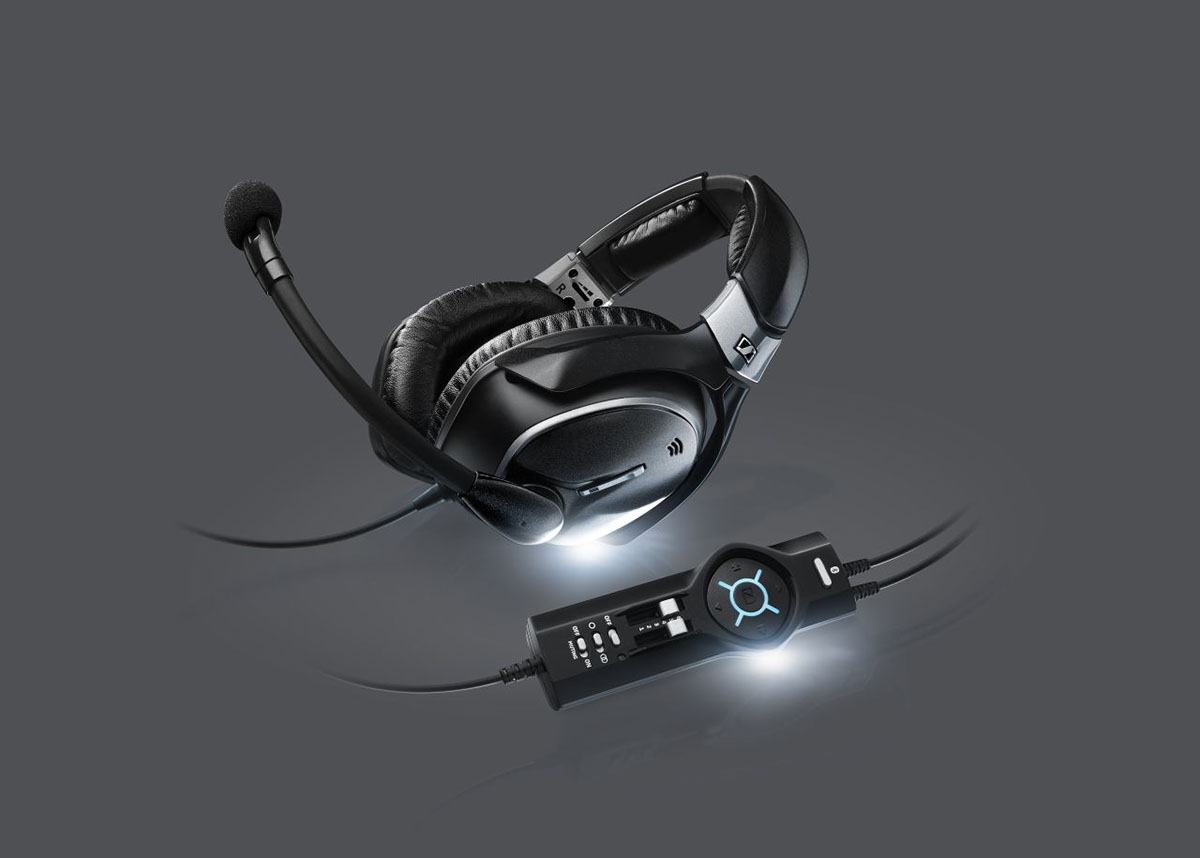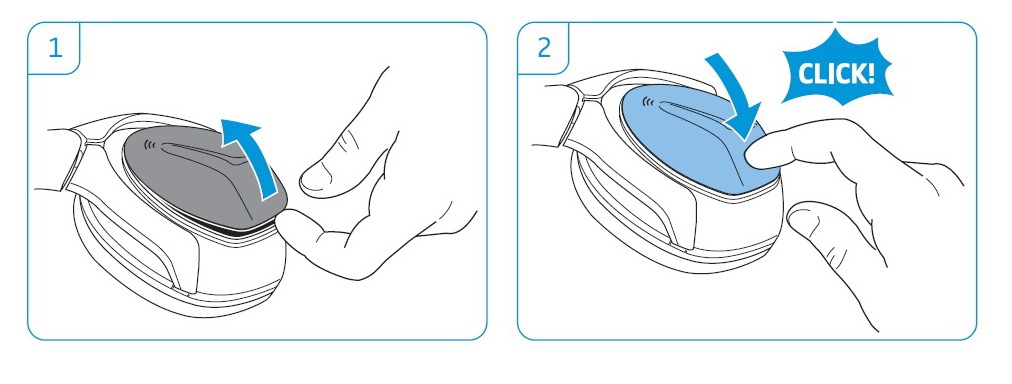
Sennheiser started with a blank page when they worked together with BMW DesignworksUSA to design the S1 Digital Aviation Headphones. It's not a derivative of anything they offer today, and it offers several features not seen on any headset currently on the market. The S1 sets a new benchmark for aviation headsets and development took four years.
The S1's most innovative and important feature is the way it attenuates harmful noise. The S1 is an active noise reduction (ANR) headset i.e. it uses algorithmes to block damaging noise. In addition to employing traditional passive features, like the ear-cup design, contact pressure and acoustically absorbent materials. That's not new. What's new is the way it employs the active noise cancellation.
Traditionally, ANR headsets use an acoustic "trick" to help save your ears. They use a tiny microphone mounted on the inside of each ear cup. The microphone picks up harmful noise before it enters your ears, samples the frequencies and creates a duplicate of the sound, exactly 180 degrees out of phase, effectively canceling out the offending sound. The problem is that this method is effective in blocking mostly the low-frequency noise. The highs still get through and can cause hearing damage.
The S1's most innovative and important feature is the way it attenuates harmful noise. The S1 is an active noise reduction (ANR) headset i.e. it uses algorithmes to block damaging noise. In addition to employing traditional passive features, like the ear-cup design, contact pressure and acoustically absorbent materials. That's not new. What's new is the way it employs the active noise cancellation.
Traditionally, ANR headsets use an acoustic "trick" to help save your ears. They use a tiny microphone mounted on the inside of each ear cup. The microphone picks up harmful noise before it enters your ears, samples the frequencies and creates a duplicate of the sound, exactly 180 degrees out of phase, effectively canceling out the offending sound. The problem is that this method is effective in blocking mostly the low-frequency noise. The highs still get through and can cause hearing damage.

The S1 enhances that idea by making the attenuation cover much more of the sound spectrum. It adds two more high-sensitivity microphones—this time mounted on the outside of the ear cups. These microphones pick up high-frequency noise from the airflow over the fuselage and from the propeller and engine. Combined, the four microphones block a wide swath of harmful frequencies. With a few exceptions, headsets use only one technique or the other. A quick glance at the attenuation curve for this headset reveals attenuation across many frequencies, not the usual, diagonal (and narrow) line of noise suppression common to typical ANR headsets.
The S1 introduced Sennheiser's NoiseGard Digital, taking the technology even further. This system offers true "adaptive" noise reduction. By pushing a little button on the side of the ear cup at any point in the flight, the headset takes an audio snapshot of the sound environment at that very second. It samples the noise and creates an "anti-noise," but in real time. It's a sort of "parametric EQ" in reverse. Therefore, the headset can be continuously optimised throughout the flight! Other manufacturers who offer "adaptive ANR" do it by matching the offending noise to a preset approximation, not a true analysis. The difference in sound is significant.
The S1 introduced Sennheiser's NoiseGard Digital, taking the technology even further. This system offers true "adaptive" noise reduction. By pushing a little button on the side of the ear cup at any point in the flight, the headset takes an audio snapshot of the sound environment at that very second. It samples the noise and creates an "anti-noise," but in real time. It's a sort of "parametric EQ" in reverse. Therefore, the headset can be continuously optimised throughout the flight! Other manufacturers who offer "adaptive ANR" do it by matching the offending noise to a preset approximation, not a true analysis. The difference in sound is significant.


For reasons of hygiene and wear-and-tear, the headband padding, the ear pads and the wind screen are replacable. Gel ear seals (and their characteristic "hot spots") were replaced with special viscous foam, similar to the memory foam in high-end mattresses. A special “comfort zone” for eyeglasses and a V-shaped elongation for the ear lobes reflect an in-depth understanding of pilot's needs. The S1 also features adjustable headband tension for each ear cup - unique to Sennheiser. The ear cups are quite large and stand well away from your ear, making the S1 very comfortable.


Customised design caps in different finishes and with personal imprints are available from selected Sennheiser partners.


Retail price: $1,095
http://www.sennheiser-aviation-s1.com/
Review by Marc C. Lee (Plane and Pilot Magazine)
http://www.planeandpilotmag.com/products/tech-talk/sennheiser-s-1.html
Photo credits: Sennheiser Electronic GmbH & Co. KG
http://www.sennheiser-aviation-s1.com/
Review by Marc C. Lee (Plane and Pilot Magazine)
http://www.planeandpilotmag.com/products/tech-talk/sennheiser-s-1.html
Photo credits: Sennheiser Electronic GmbH & Co. KG


